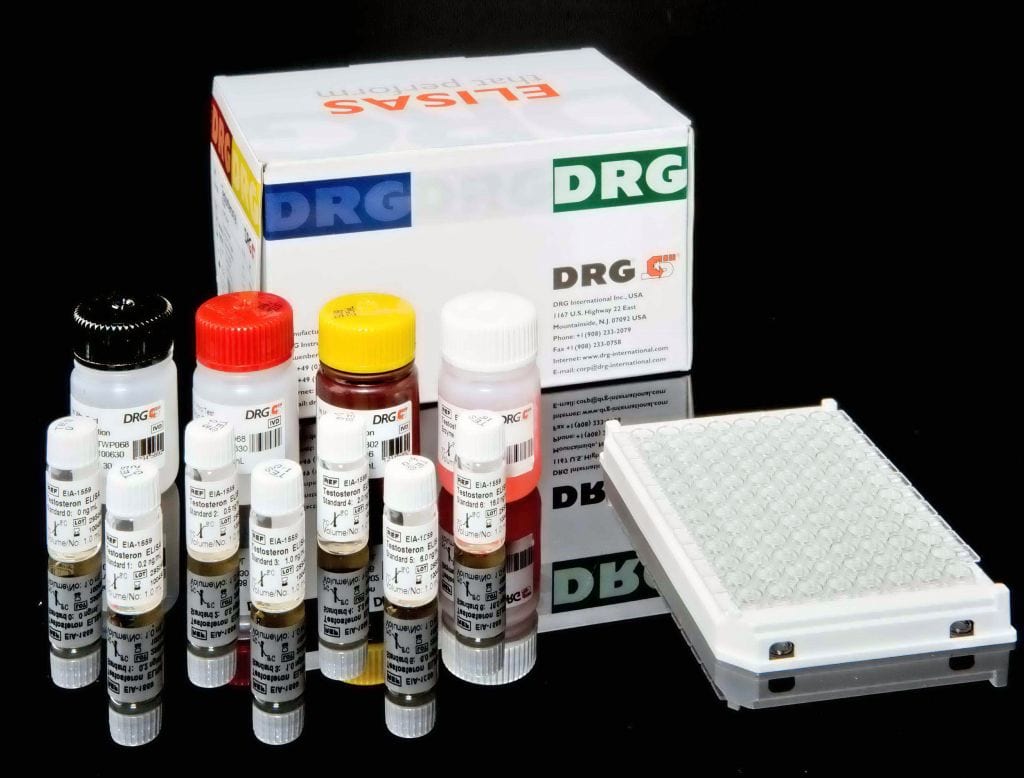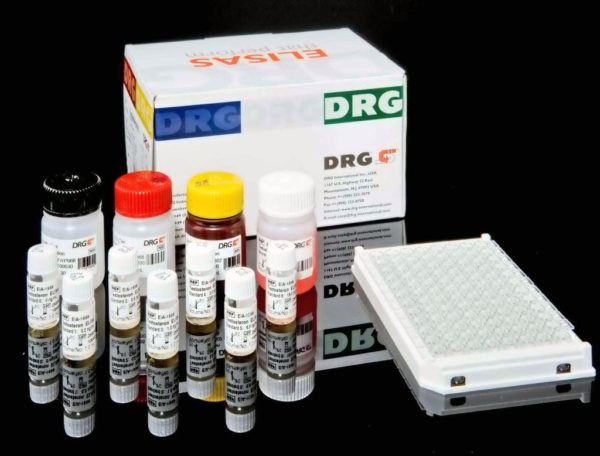Description
The DRG Tetanus toxin IgG Enzyme Immunoassay Kit provides materials for the quantitative determination of IgG-class antibodies to Tetanus toxin in human serum or plasma.This assay is intended for in vitro diagnostic use only.Clostridia are anaerobic spore-forming gram-positive bacilli whose pathogenicity depends on the release of highly destructive enzymes or powerful exotoxins. Clostridium tetani is ubiquitously present in the soil and in the faces of various animals and produces (among others) the potent neurotoxin tetanospasmin which is released by autolysis. Hence, tetanus
syndrome develops only when spores of Clostridium tetani germinate under strict anaerobic conditions after gaining access to wounds and small lacerations. Ingestion of bacteria and growth in the intestine of man or animal is without harm. Tetanospasmin is an extremely toxic agent still causing death in 50% of infected patients. In Europe tetanus mainly occurs after injuries, and sometimes, postoperative, whereas in developing countries Tetanus neonatorum is widely disseminated causing death in up to 10% of live births. Tetanus toxin is an excellent immunogen in man – only one antigenic type of toxin. The only effective way to control tetanus is by prophylactic active immunization with formol toxoid.
The DRG Tetanus toxin IgG ELISA Kit is a solid phase enzyme-linked immunosorbent assay (ELISA) Microtiter wells as a solid phase are coated with Tetanus toxoid antigen.
Diluted patient specimens and ready-for-use controls are pipetted into these wells. During incubation Tetanus toxin-specific antibodies of positive specimens and controls are bound to the immobilized antigens. After a washing step to remove unbound sample and control material horseradish peroxidase conjugated anti-human IgG antibodies are dispensed into the wells. During a second incubation this anti_IgG conjugate binds specifically to IgG antibodies resulting in the formation of enzyme-linked immune complexes. After a second washing step to remove unbound conjugate the immune complexes formed (in case of positive results) are detected by incubation with TMB substrate and development of a blue color. The blue color turns into yellow by stopping the enzymatic indicator reaction with sulfuric acid. The intensity of this color is directly proportional to the amount of Tetanus toxin-specific IgG antibody in the patient specimen. Absorbance at 450 nm is read using an ELISA microtiter plate reader.




